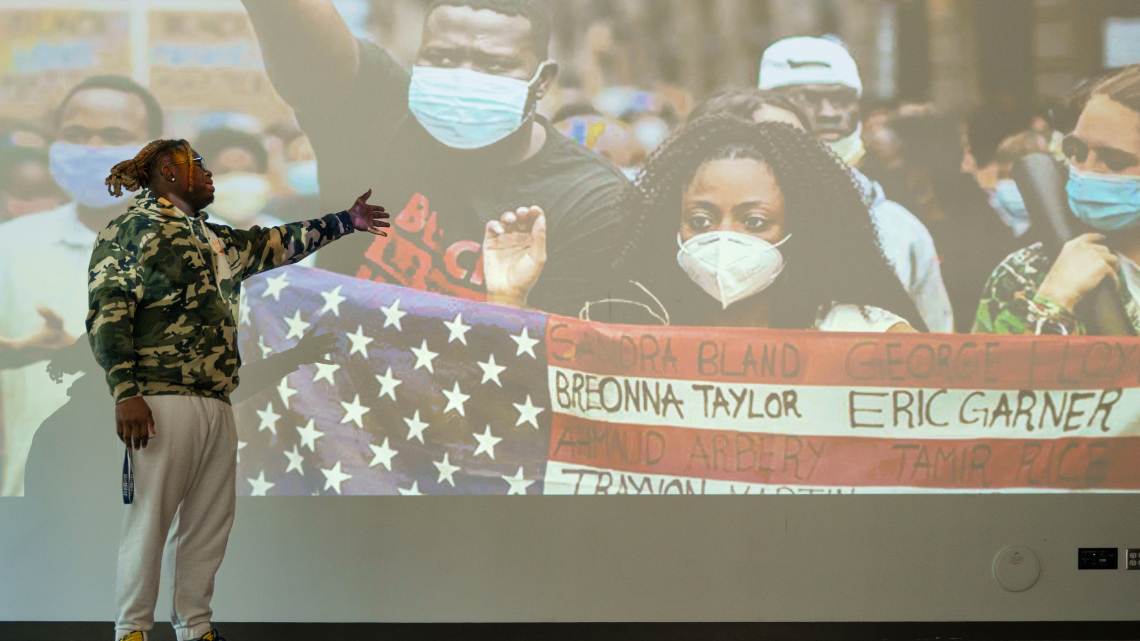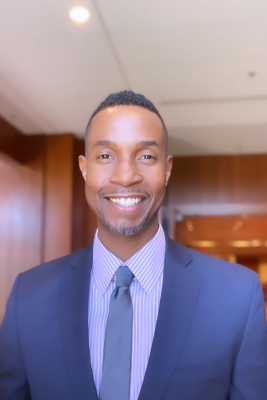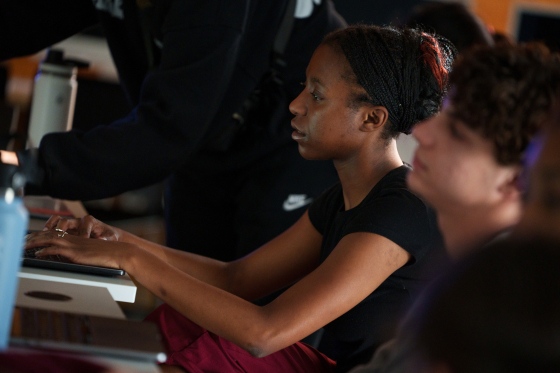
Margo Lakin, Trinity Communications

It was 2020, and Iyun Ashani Harrison was still one year away from accepting his position with the Dance Program. He spent most of his time in his California hills apartment on lockdown from the pandemic and surrounded by wildfires — while the rest of the country was also on fire.
“The intersections of COVID-19, the murder of George Floyd by law enforcement, the amplification and consumption of Black suffering, the Black Lives Matter movement, Time’s Up and the California wildfires created space for me to wrestle with the tremendous challenges impacting our lives in the United States,” Harrison shares.
“My reflections made me wonder how I could facilitate socially conscious artmaking in the classroom, moving away from artifice and the imperatives of beauty expected in classicism.”
And like so many of us at the time, he turned heavily to social media. Self-reflecting on his online activities as he used his art of ballet as an agent for change, Harrison began to envision the framework for a course where digital activism and the arts could converge to address social inequities.
“As artists, we can have tremendous influence,” Harrison says. “We can use our talents and training to create culturally relevant art that provides social critique and ignites change — and today’s students are well-informed because of their technological savvy and eagerness to take a stance against injustice!”
“If they are taught to focus their ideas, students can create engaging and provocative art,” he adds.
The associate professor of the practice brought his ideas with him to Duke and created a new course offering: Arts Activism & Everyday Technology. Through seminars and self-directed presentations, students studied past and present artist-activists and researched a topical issue of their choice. Final projects were interdisciplinary digital exhibitions with arts elements that included video, spoken word, photography, music and drama.
“I felt the class should allow for exploration — play — an organized messiness that did not foreground outcomes,” Harrison says. “Instead, we would highlight a self-directed process and storytelling through art.”
Harrison wanted the students to think about how they engage in virtual spaces with their selected art forms to create new ways of expressing ideas, and the stories in that first class were as diverse as the students who told them: Black Lives Matter, non-binary identity, plastics pollution, sexual assault and school shootings.
Leah Esemuede, a senior double majoring in Dance and Psychology, enrolled in the course looking for answers to her question: What can a dance do?

“I wanted to explore the capacity of art and to engage in activist work with a tangible impact,” she explains. “I was particularly interested in creating a piece of art activism, and the class gave me the opportunity to engage with dance in a way that I’d never experienced.”
For her final project, Esemuede created a piece that centered around the use of Black people and the pain they feel as artists. Set to “The Revolution Will Not Be Televised” by Gil Scott-Heron, she used television clips, audio and an improvisation-based contemporary video to remind viewers that the painful experiences Black people face are not products meant to entertain and then be discarded.
“As a Black woman and an artist, there have been times when I’ve felt as though I’m valued for my artistry over who I am as a person,” she shares. “It’s also not uncommon for people to place responsibility on me to address issues the Black community faces — without considering the personal and emotional tolls it may have.
“I think in some sense, my project served as a reminder to acknowledge my humanity and to set up boundaries when I need to take a step back.”
She and her classmates were challenged to avoid a focus on “beautiful” final projects. Rather, they were encouraged to create work depicting the reality of the subject matter they selected and learned that beauty doesn’t exist in only the visual aspects of their work but also in the impact.
“The class was such a kind and supportive community — even though we came from so many different personal and academic backgrounds,” Esemuede notes.
And that’s what Harrison wanted: an inclusive and welcoming space where students were comfortable enough to integrate different parts of their lives in meaningful ways as they developed critical thinking skills and challenged how they filtered information. Because art is powerful and can affect change, Harrison believes we should all be aware and responsible for what we put out into the ethos.
“I wanted to help our students negotiate a world on fire — socially, politically and literally.”